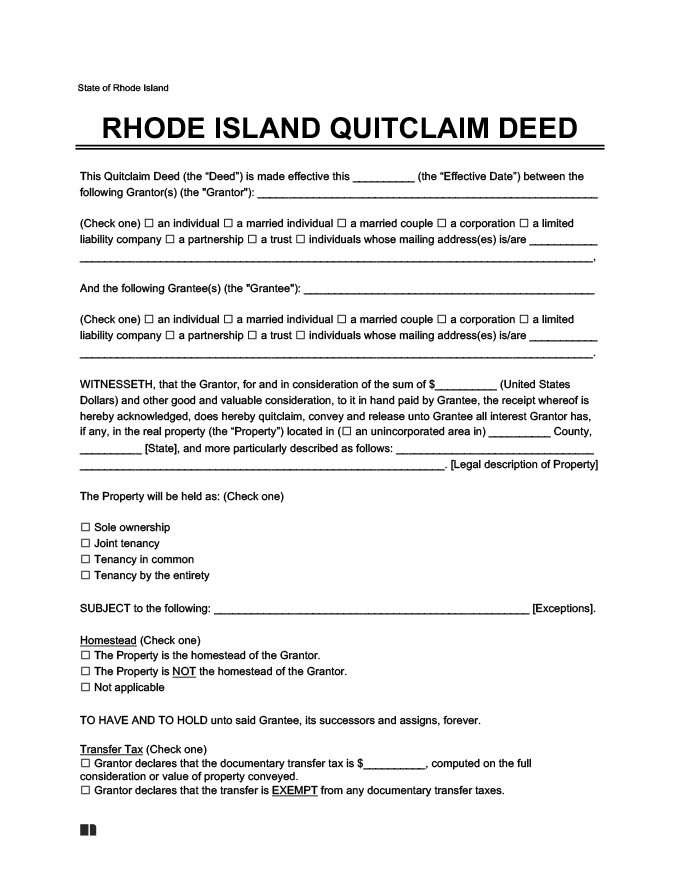Whether you’re transferring property to family or friends or updating ownership information, it’s essential to follow the proper steps in filing your Rhode Island quitclaim deed.
Step 1: Get the Deed
Ask the current owner for a copy of the original deed. If the original deed is unavailable, you can obtain a copy from your city or town property recorder’s office. You may need to consult a title office or a property law attorney to confirm the document is accurate.
Step 2: Verify the Property Description
Refer to the original deed to verify a match between the deed’s property description and the legal description of the property in the recorder’s office.
Step 3: Complete the Form
Write all necessary details, including both parties’ names, the grantee’s full address, and the property’s legal description.
Ask a lawyer for advice or assistance if you have questions about your unique situation.
Step 4: Sign Before a Notary
Sign the form in front of a notary public with proper identification. The Rhode Island Department of State has resources for finding a notary public if you need help locating one.
Step 5: Fill Out a Property Disclosure Statement
Write a property disclosure statement to reveal any material defects, ensuring to abide by RI Gen. Laws § 5-20.8-2. This way, the grantee will know the condition of the property they plan to accept.
Step 6: File the Documents and Pay
File the documents at the recorder’s office in the appropriate city or town. Pay the associated real estate conveyance tax and filing fees. While there are standard state fees that everyone has to pay, you may pay additional fees depending on your city or town’s guidelines.
Step 7: Wait for the Recorder’s Office
The recorder’s office will issue the deed to the grantee when they finish the recording process. The grantor should obtain and keep a copy for their records.
